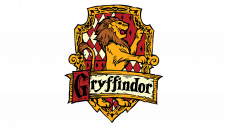Family Feud Logo
Family Feud, originally a television game show, has expanded into various entertainment sectors. Primarily focused on creating interactive experiences, its main markets now include digital games, mobile applications, and themed merchandise. The company, once known for its iconic TV format, has evolved, leveraging its brand to venture into online streaming and live event hosting. Ownership remains under the stewardship of FremantleMedia, which has successfully diversified the brand while maintaining its core identity as a family-friendly entertainment provider. This evolution showcases Family Feud’s adaptability in the ever-changing entertainment landscape.
Meaning and history
Family Feud, the iconic American TV game show, has seen its fortunes shift hands and production dynamics evolve throughout its storied history. Conceived by the ingenious Mark Goodson, the show made its debut in 1976 and quickly entrenched itself in the hearts of viewers across the nation.
In its early years, the production reins were firmly held by Goodson-Todman Productions. However, the winds of change blew in 1982 when Mark Goodson orchestrated the sale of his production company to Pearson PLC, a British media juggernaut. Remarkably, the core essence and charm of the show remained unaltered during this pivotal transition.
Fast forward to 1984, and Pearson PLC decided to pass the baton, selling the prized rights of Family Feud to Columbia Pictures Television, later rebranded as Sony Pictures Television. This shift in ownership brought about minimal perturbation to the show’s beloved format and appeal.
The early ’90s witnessed a renaissance for Family Feud, with the irrepressible Louie Anderson stepping into the hosting spotlight. This revival was masterminded by Catalena Productions and Tribune Entertainment. Even with a change in hosts and production houses, the essence of Family Feud remained steadfast.
In 1999, a fresh tide of change washed over Family Feud when Viacom, now known as CBS Corporation, seized the rights. Under Viacom’s stewardship, the show experienced a carousel of hosts, including Richard Karn, John O’Hurley, and the irrepressible Steve Harvey.
The crowning moment in Family Feud’s journey came in 2010, as Steve Harvey took the reins of hosting, ushering in an era of unprecedented success. The show’s viewership soared, solidifying its position as a titan among TV game shows.
Family Feud has passed through a kaleidoscope of ownership changes and production variations since its inception in 1976. Nevertheless, its enduring appeal, embodied in its time-tested format, has kept audiences enthralled, ensuring its status as a perennial favorite in the realm of television game shows.
What is Family Feud?
“Family Feud” is a popular television game show where two families compete against each other by answering survey questions to win points. The show is known for its engaging format, where the answers are based on the most popular responses from a group of 100 people surveyed before the show.
1976 – 1985
The logo presents a striking circular emblem, with a vibrant yellow background that commands attention. Encircling the circumference, a series of uniformly spaced red dots adds a playful touch, reminiscent of lights on a marquee, suggesting excitement and anticipation. The title “FAMILY FEUD” is boldly emblazoned across the center in a robust red font that features distinctive block letters with a vintage arcade style, conveying a sense of nostalgia and timelessness. The typography is assertive, with sharp angles and solid lines that stand out against the yellow backdrop, ensuring the title is the focal point. A red border frames the logo, providing a strong contrast that further accentuates the retro aesthetic of the design.
1988 – 1994
The logo features “FAMILY FEUD” in a bold, pixelated font, yellow with a blue outline for depth, against a deep blue grid. Its retro, digital style nods to early video games, with the title encircled by a colorful, pixel-art floral pattern. The red ring border, dotted with white and yellow, mimics a game-show marquee’s lights. This redesign adds a tech flair with pixels and game-like graphics, keeping the familiar circular form and bright marquee cues. The inclusion of a floral pixel pattern introduces a soft, organic contrast to the technological feel.
1994 – 1995
The “FAMILY FEUD” logo sports an oval shape with a shadowed, golden yellow border, giving it a three-dimensional effect. Bold, blocky text in gold floats against a textured silver backdrop, simulating stage light reflections. This version swaps previous smooth graphics for a tactile metallic look, signaling a contemporary refresh. Differing from pixel art and florals, it leans towards 1990s digital sophistication. Marquee dots remain but are subtler against the shimmering silver, indicating refined branding.
1996
In this logo, “FAMILY FEUD” is rendered in a bold, pixelated font with a golden outline against a solid royal blue ellipse. The text harks back to the digital, arcade-style aesthetic, a nod to the retro gaming era. This design simplifies the logo, stripping away the intricate textures and reflective qualities seen in the previous version. The blue is deep and unadorned, a canvas that allows the golden, blocky letters to stand out sharply. The yellow outline of the ellipse is smooth and uniform, a subtle boundary that contrasts with the intense blue. This iteration represents a return to simpler graphics, focusing on stark color contrasts and clarity over the previous logo’s more nuanced, metallic sheen. The absence of additional decorative elements, like the marquee dots or floral patterns from earlier versions, signifies a minimalist turn in the visual identity of the show, perhaps suggesting a more modern and streamlined approach.
1999 – 2006
The new “FAMILY FEUD” logo pairs cursive “Family” in gold with red trim with a blocky “FEUD” in reflective silver. It’s set against an elliptical gradient from soft to dark blue, bordered by brown for elegance. This design ditches the retro pixel look for a glossy, modern finish with dynamic gradients and shadows. More colors and shading make it vibrant and engaging, and the cursive “Family” adds a personal touch against the previous mechanical style.
2006 – 2007
The redesigned “FAMILY FEUD” logo features bold, angular letters in yellow with blue shading for a 3D pop-out effect, outlined in black. It replaces soft curves with a striking, forward-leaping visual. This version abandons the previous logo’s gradient and cursive for an assertive, edgy look. The design’s perspective and shading suggest movement, indicative of a dynamic, modern rebrand. With a simplified color scheme, it emphasizes contrast and depth between the bright yellow and deep blue.
2007 – Today
The logo is a vibrant and dynamic representation, likely for a television game show. It features a bold, sans-serif font that spells out “FAMILY FEUD” in capital letters. The letters are rendered in a gradient of warm colors, transitioning from a deep orange at the top to a bright yellow at the bottom, creating a fiery effect that exudes energy and excitement. Each letter is outlined in a thin red border, enhancing its prominence against the background.
The background of the logo is a rich blue with a subtle pattern that might suggest a digital or electronic theme, possibly reminiscent of a game board or screen. This blue backdrop is adorned with small, lighter blue dots scattered throughout, giving it a bubbly, effervescent texture. This could symbolize the light-hearted and playful nature of the show.
Encircling the text is a red border that curves around the edges of the logo. This border has a three-dimensional appearance, with highlights and shadows that give it a glossy, almost metallic look. The use of bright, contrasting colors and shiny textures in the border adds to the logo’s eye-catching and lively appearance.
The logo is designed to attract attention and convey a sense of fun, competition and family entertainment.


















